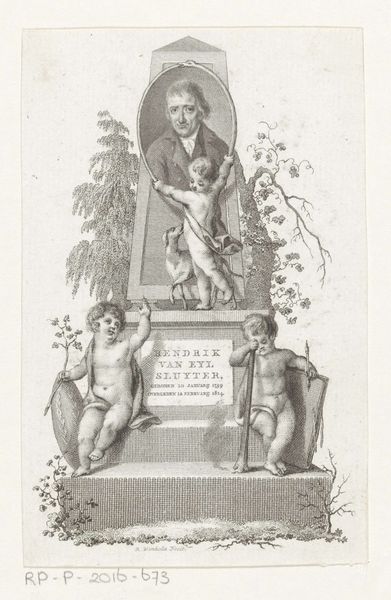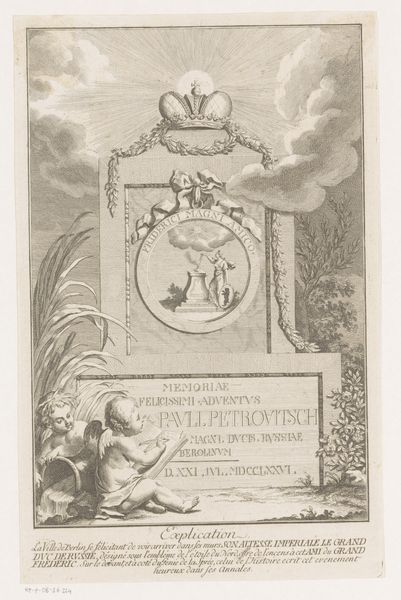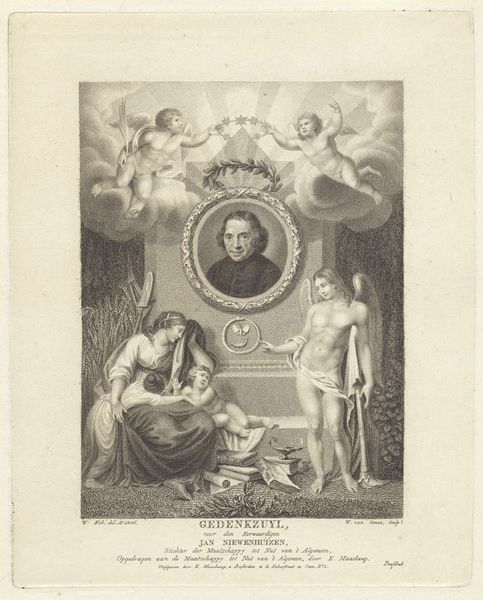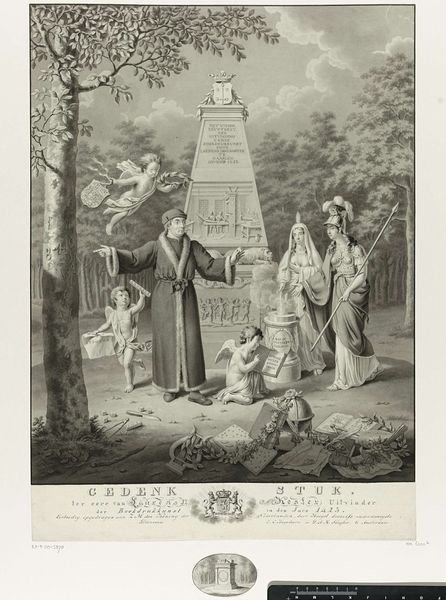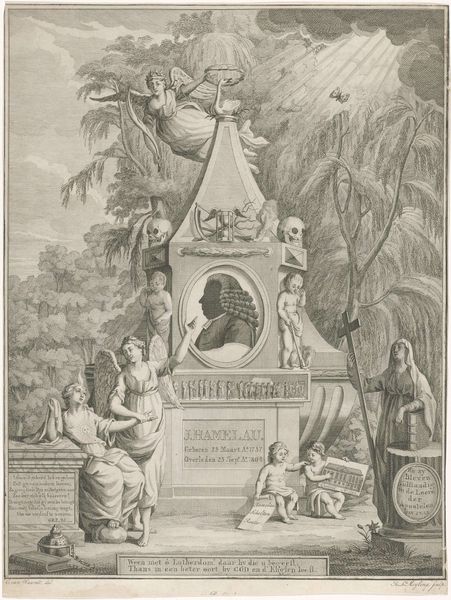
drawing, paper, engraving
#
portrait
#
pencil drawn
#
drawing
#
neoclacissism
#
pencil sketch
#
old engraving style
#
figuration
#
paper
#
pencil drawing
#
line
#
history-painting
#
academic-art
#
engraving
Dimensions: height 334 mm, width 247 mm
Copyright: Rijks Museum: Open Domain
Curator: The work before us, "Gedenkteken voor Hubert Nicou," was created between 1818 and 1820. The artist, Walraad Nieuwhoff, masterfully employs engraving on paper to render this memorial. Editor: It’s immediately striking how neoclassical it feels. Very composed, almost like a stage, but undeniably melancholic. Look at the woman, deeply saddened and slumped next to the central pillar. Curator: Indeed. This engraving showcases the typical elements of Neoclassical art that was prevalent in Europe at this time. It borrows inspiration from classical antiquity. Take for instance the monument which takes a similar style to the headstones that Romans or Greeks may have designed. Also the style in which the characters are drawn remind viewers of Greek statues and their idealized forms. Editor: Yet, there's something intriguing in its overt symbolism. An hourglass laying sideways beside a figure holding what appears to be a replica of a building makes me ponder. We have symbols alluding to the passing of time along with cherubs and holy figures above a monument built for what it seems to be a clergyman. Curator: It encapsulates both public remembrance and private grief, key to understanding art's socio-political role in post-Napoleonic Europe. The text inscriptions identify Hubert Nicou, and give reverence to the highly esteemed Reverend from Leiden, which in its context meant much more given the cultural context of that time. Memorials like this were commissioned for popular figures and were a display of wealth at the time. Editor: How do you feel these representations play into a wider narrative about civic virtue? Is it enough, if the figures immortalized in these forms weren't as perfect or just as this suggests? And, where’s the reckoning of their humanity? Curator: It served to construct a heroic narrative but was designed in the image of what rulers idealized to see, the same thing happens in political campaign images to this day. Editor: Food for thought. Despite the piece having a funerary undertone it remains visually arresting and emotionally stimulating, making one stop to consider death in conjunction with art as a tool of state even to this day. Curator: Agreed, it leaves us considering not just Nicou's legacy, but the enduring power of memorial and artistic intention, to idealize, or sometimes to be honest.
Comments
No comments
Be the first to comment and join the conversation on the ultimate creative platform.






